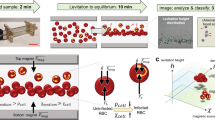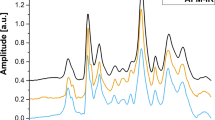Abstract
IT is now generally accepted that interspecific differences are the result of inherited variations, developed during the course of evolution, in the structures (and amounts) of the proteins of the species concerned. Thus, although organisms of many diverse types possess cytochrome c, the cytochrome c molecules differ in structure, from organism to organism, to an extent which is related to the time that has elapsed since divergence from a common ancestor1, and the same is true for the haemoglobins of animals2. Intraspecies differences are the outward manifestations of less profound modifications affecting only a few of the proteins. Thus some human racial groups differ in the incidence of certain of the variant forms of plasma proteins and red cell enzymes, and also in the incidence of some of the blood group types (which are now recognized as resulting from the activities of variant enzymes)3. Clearly, if analogous proteins in different strains of a species could be characterized in some way, such as by electrophoresis, which shows up small structural differences, biochemical classification of the different strains would be possible, and this could be of some value as a taxonomic tool. Some advances along these lines have already been made : in the field of protozoology for instance, different strains as well as different species of the malarial parasite were recently reported to differ, to a lesser and greater degree respectively, in electrophoretic characteristics4.
This is a preview of subscription content, access via your institution
Access options
Subscribe to this journal
Receive 51 print issues and online access
$199.00 per year
only $3.90 per issue
Buy this article
- Purchase on Springer Link
- Instant access to full article PDF
Prices may be subject to local taxes which are calculated during checkout
Similar content being viewed by others
References
Dickerson, R. E., Sci. Amer., 226, 58 (1972).
Ingram, V. M., Nature, 189, 704 (1961).
Giblett, E. R., in Genetic Markers in Human Blood (Blackwell, Oxford and Edinburgh, 1969).
Carter, R., and Voller, A., Trans. R. Soc. trop. Med. Hyg., 67, 14 (1973).
Kilgour, V., Nature new Biol., 244, 69 (1973).
Wraxall, B. G. D., and Culliford, B. J., J. foren. Sci. Soc., 8, 81 (1968).
Fildes, R. A., and Parr, C. W., Biochem. J., 87, 45P (1963).
Carter, N. D., and Parr, C. W., Nature, 216, 511 (1967).
Author information
Authors and Affiliations
Rights and permissions
About this article
Cite this article
BAGSTER, I., PARR, C. Trypanosome Identification by Electrophoresis of Soluble Enzymes. Nature 244, 364–366 (1973). https://doi.org/10.1038/244364a0
Received:
Issue Date:
DOI: https://doi.org/10.1038/244364a0
This article is cited by
-
Use of enzyme ratios for differentiating stocks ofTrypanosoma vivax
Zeitschrift f�r Parasitenkunde Parasitology Research (1986)
-
Species identification in protozoa: Glucosephosphate isomerase variation in the Paramecium aurelia group
Biochemical Genetics (1978)
Comments
By submitting a comment you agree to abide by our Terms and Community Guidelines. If you find something abusive or that does not comply with our terms or guidelines please flag it as inappropriate.



